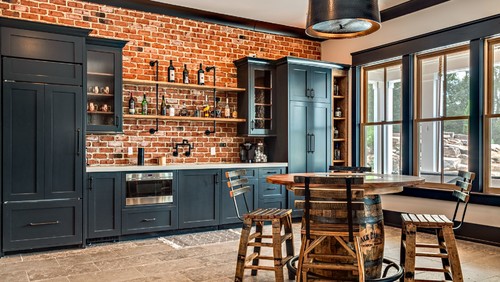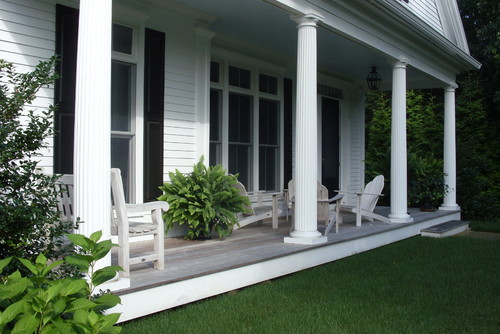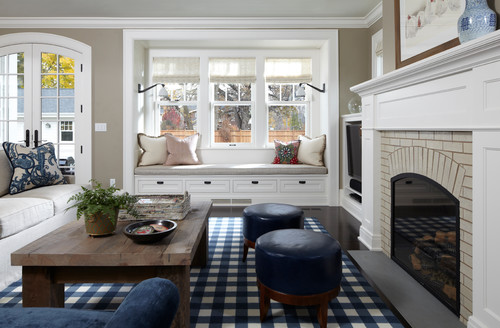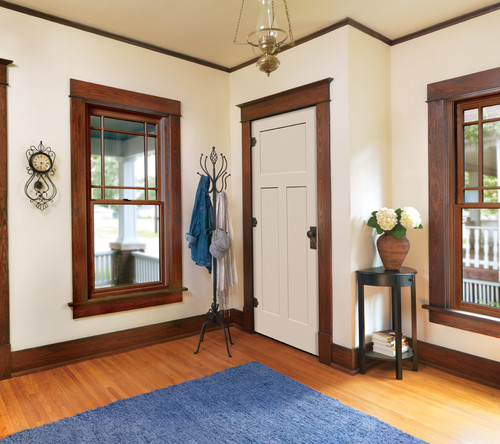7 Architectural Elements You Should Never Touch During a Renovation
Older homes have plenty of charm, but they also have their inconveniences: drafts, slanting floors, closed-in kitchens, and tiny bathrooms. The way we live now is just different. So if you’re considering updating an older home to incorporate modern comforts, there’s something appealing about just doing a gut renovation and starting with a clean slate. Then you can finally create your dream home exactly as you see it in your mind.
But while in general you want to get rid of outdated, inefficient features, you should hold off when it comes to certain unique architectural details.
“Architectural features that give homes distinct character should be left intact,” advises Patrick Garrett, a broker and owner at H&H Realty in Trussville, AL. “There are home buyers looking for homes with unique features and older homes with character and charm.”
If you’re lucky enough to own a home with historic flair, here are some of the elements that you should endeavor to preserve.
1. Molding
Photo by Precision Homecrafters, LLC
The traditional look of molding is so popular that it’s even found in most newly built homes. If your older home already has these original elements, rejoice!
“On the inside of the home, the first things we salvage are the staircase, window trim, and crown molding,” says Thomas Kenny, co-founder of Scott Simpson Design + Build in Northbrook, IL. “The original molding, in particular, gives the home character and is usually crafted from high-quality materials that will stand the test of time.”
2. Exposed brick
Photo by Old Hillsboro Building Company
Before you take a sledgehammer to your exposed brick walls, consider this: Many homeowners are actually stripping away their bland drywall to expose the beautiful brick behind it.
“You should not remove exposed brick, because it lends a unique architectural element that brings texture and a rustic vibe to a space,” says Laurie DiGiacomo, principal designer at Laurie DiGiacomo Interiors in Ho-Ho-Kus, NJ. In many homes, the exposed brick serves as a focal point in the room.
3. Columns, exterior trim, and siding
Photo by Michelle Jacoby, Changing Spaces
There’s a lot of character in the exterior of an older home.
“When working on historic renovations, we always try to maintain the structural integrity, which means keeping a few elements like columns, exterior trim, and siding intact, because those are impossible to replicate,” says Kenny.
A historical porch with columns may be the home’s most notable exterior feature.
4. Built-in bookcases and window seats
Photo by Peterssen/Keller Architecture
These space-saving features add charm and functionality to a home’s interior.
“Built-in bookcases are highly functional, but they also allow one to artfully arrange objects and books,” says DiGiacomo.
And she considers window seats an amenity that could tug at future buyers’ heartstrings.
“They are one of those features in a home that instantly forces you to imagine living in that home,” she says. “The minute someone sees a window seat, they immediately fantasize about relaxing and curling up there with a good book.”
5. Stained glass
Photo by Shed Brand Studios
Upgrading windows is a usual part of any reno—but think twice if those windows are made of stained glass. Original stained glass is pretty rare, and that increases the desirability factor, according to Jonathan Self, a real estate agent at Center Coast Realty in Chicago.
“Once you come across [stained-glass windows], you will remember them for a lifetime,” says Anastasios Gliatis, CEO at Anastasios Interiors in New York City. “They also provide a spiritual, peaceful feeling, since they are identified with churches.”
6. Fireplaces
A fireplace used to be necessary to generate heat, but now it can help generate interest in your home.
“Fireplaces are always a great addition to your home, and older fireplaces come with rich details and rare stones,” Gliatis says. As a result, they create a focal point when walking into the room.
7. Solid core/paneled doors
Photo by HomeStory Doors of Chicago
The doors in your older home are nothing like the variety at the big-box store down the street.
“Old solid-core doors, and often their metal elements like doorplates, are real gems,” says Self. “You can’t buy these with any amount of money, because the craftsmanship it takes to make them doesn’t exist anymore.”
Paneled doors with brass knobs and hinges are definitely worth keeping, Gliatis adds, because this type of hardware can be hard to find and is quite expensive.
For this and similar articles, visit Realtor.com








I appreciate you saying that stained-glass windows are something you will always remember. My sister complains that a yellow stain has appeared on her glass window. I’ll tell her to acquire the glass shop drawing so she can find the glass that will fit her window the best.